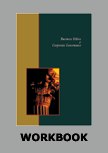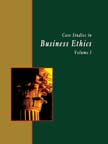The Le Clemenceau Controversy: Business vs. Safety
|
|
ICMR HOME | Case Studies Collection
Case Details:
Case Code : BECG062
Case Length : 8 Pages
Period : 1997-2006
Pub. Date : 2006
Teaching Note :Not Available
Organization : -
Industry : Ship-breaking
Countries : France, India
To download The Le Clemenceau Controversy: Business vs. Safety case study (Case Code:
BECG062) click on the button below, and select the case from the list of available cases:

OR

Buy With PayPal
|
Price:
For delivery in electronic format: Rs. 200;
For delivery through Shipping & Handling Charges extra: Rs. 200 +Shipping & Handling Charges extra
» Business Ethics Case Studies
» View Detailed Pricing Info
» How To Order This Case
» Business Case Studies
» Case Studies by Area
» Case Studies by Industry
» Case Studies by Company
Please note:
This case study was compiled from published sources, and is intended to be used as a basis for class discussion. It is not intended to illustrate either effective or ineffective handling of a management situation. Nor is it a primary information source.
Chat with us

Please leave your feedback

|
|




<< Previous
Le Clemenceau Called Back Contd...
This prompted international environmental activist organization Greenpeace5 and several trade unions in India to jump into the fray and to protest against allowing the entry of Le Clemenceau into Indian waters.
|
In the early hours of January 12, 2006, when Le Clemenceau was stationed 50 nautical miles off the Egyptian coast, two Greenpeace activists got on board and hung up a banner on the ship that said, 'Asbestos carrier, stay out of India.' The warship, on its way to India, had been stopped at the Suez Canal by the Egyptian authorities, who suspected that the vessel contained toxic materials. However, French authorities obtained permission from the Egyptian government for
Le Clemenceau to pass through the Suez Canal after providing documents in proof of their stand that the ship did not contain any toxic materials. The French government estimated that around 45 tons of asbestos were on board6 and agreed to take back any hazardous waste that came out during the dismantling process...
|

|
Spotlight on the Ship-Breaking Industry
The Le Clemenceau controversy brought into focus the poor safety standards for workers in India's ship-breaking industry. Asia accounted for the largest ship-breaking market in the world with Bangladesh, China, India, and Pakistan having a dominant 90% share of the total ship- breaking market.
|
|
India, in particular, had had a history of dismantling warships purchased from Russia and other western nations. Alang, located on the western coast of India in the state of Gujarat, was one of the biggest ship-breaking ports in the world (Refer to Exhibit I: Brief Note on the Ship-breaking Industry in India).
Even before the Le Clemenceau episode had thrust it into the limelight, Alang had been attracting the ire of environmental activists due to the working conditions prevalent there and the fact that safety standards were way below international norms. Workers employed for ship-breaking lacked even basic safety gear like gloves or protective clothing and equipment... |
Excerpts >>
|
|









